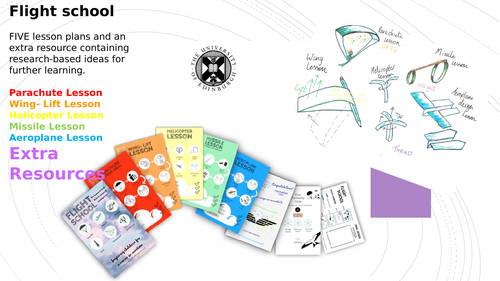





This resource is a the second of a set of five lesson plans with STEM activities based around a group of 10-12 year olds, wanting to get their ‘wings’ from Flight School, by completing activities on forces associated with flight.
Other sessions involve LIFT, THRUST, WEIGHT), and the fifth AEROPLANE pulls together all the learning.
In this second session students are introduced to the force LIFT. This session is designed to allow the students to investigate lift by focusing on the shape of an aeroplane wing. By the end of the lesson the goal is that the students will have an understanding about the shape of an aeroplane wing and how it causes the aeroplane to fly up into the air.
This bundle includes: extensive teacher notes bundle includes pdf and editable versions of the following:
• Teaching Notes - contents for each lesson includes:
• Science behind the lesson
• Materials best for the session
• Parachute shapes
• Plenary responses
• List of resources specific for this lesson.
• Main Lesson Plan (as a PowerPoint Resource)
• Learning goals
• Overview
• Set Up
• Task
• Plenary and Feedback
Learning outcomes in the Curriculum for Excellence and associated benchmark
SCN 2-08a: I have collaborated in investigations to compare magnetic, electrostatic and gravitational forces and have explored their practical applications.
TCH 2-04b: I am developing dexterity, creativity and confidence when working with textiles.
MTH 2-16b: Through practical activities, I can show my understanding of the relationship between 3D objects and their nets.
LIT 2-02a: When I engage with others, , I can respond in ways appropriate to my role, show that I value others’ contributions and use these to build on thinking.
This resource was created as part of the GeoScience Outreach Course, which is a 4th year undergraduate course in the School of Geosciences aiming to provide students with the opportunity to develop their own science communication and engagement project.
Author: Joanna Barrie. Adapted by Kay Douglas and Charlie Farley
Something went wrong, please try again later.
This resource hasn't been reviewed yet
To ensure quality for our reviews, only customers who have downloaded this resource can review it
Report this resourceto let us know if it violates our terms and conditions.
Our customer service team will review your report and will be in touch.